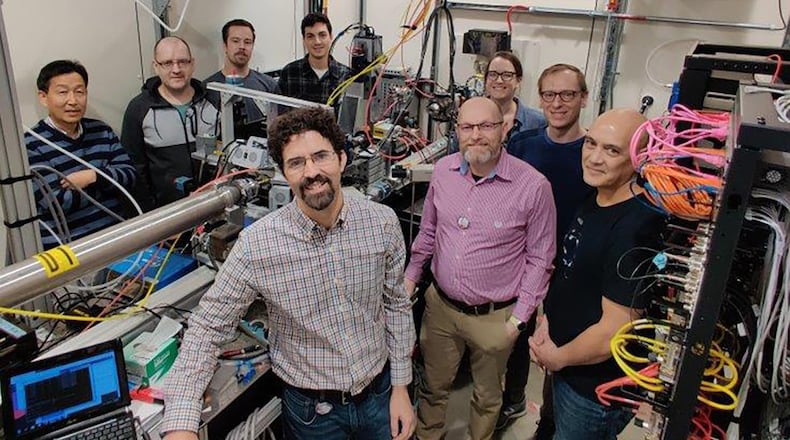The newly upgraded CHESS facility will allow breakthroughs in materials, processes and designs for aerospace and military components. The ability to process material models faster than ever will enable shorter times toward certification of new materials and difficult processing methods, such as additive manufacturing.
The beamline will allow manufacturers and researchers to observe materials in real-time and at atomic scale for structural components, such as the stationary section of a rotary system for DOD technologies, or additively manufactured articles for limited life applications.
Obtaining tangible measurement data, such as material structure in regards to gaps and interfacial quality, is now a reality. Problems and processes can be eliminated sooner and refined for quality control and consistency.
Traditionally, composites manufacturing is mainly done by hand. Hence, processing is as much art as it is science. Predictive modeling relies on numerous assumptions and experimental data. Reproducibility is low and ever-changing to a new and improved material.
This revolutionary development pushes an unprecedented real-time, high-resolution understanding of the manufacturing of composites. The research reveals processing effects and variations on thermoplastic and thermoset composites during consolidation processes such as stamping and additive manufacturing.
“We are now able to look at crystallization of thermoplastic feedstock and composites during 3D printing in real time, at one micrometer resolution,” said Dr. Hilmar Koerner, research team lead in the Structural Materials Division of AFRL. “Mapping the detailed out-of-equilibrium and time dependent morphology data of resins and reinforcement filler onto the process history will allow manufacturers to see fine details in hours to a few days rather than months and years, allowing them to make much quicker go/no-go decisions compared to the past.”
Two new X-ray beamlines – a structural materials beamline (for which higher energy X-rays are required to penetrate, e.g., metals) and a functional materials beamline (with lower energies for polymers and composites) are housed at the facility.
The structural materials beamline uses high-energy X-rays to understand the evolving internal structure of metals, ceramics and composites during service and processing conditions.
The functional materials beamline is designed for analysis of soft materials, such as organic molecule and polymer-based materials and composites used in lightweight structural components and organic electronics, during processing and under real-life load conditions.
“The facility is unique because it combines state-of-the-art synchrotron-based resources and techniques with an explicit mission to address current and emerging challenges of advanced manufacturing,” said Arthur Woll, director of the MSN-C subfacility. “This combination of capabilities and mission allows projects at MSN-C to be prioritized by their importance to addressing manufacturing challenges, rather than their relevance to academic scholarship. Furthermore, CHESS is one of only five high-energy synchrotron facilities worldwide, making it particularly suitable for the kinds of measurements needed to address these challenges.”
The X-ray beam at the functional materials beamline is only one hundredth of the width of a human hair and can probe interfaces between the matrix and the carbon fiber, between layers of printed composites and of bonded structures. Images can be taken at fractions of a second to enhance quality control in revealing behavior during processing. The beamline allows quick switching between different operating modes, such as small angle X-ray/wide angle X-ray scattering, phase contrast imaging and X-ray computed tomography.
Partnerships between Department of Defense, industry and academia to address DOD challenges in materials discovery, processing and manufacturing of disruptive technologies will enable advances in materials and designs for a multitude of military components.
The Air Force Research Laboratory (AFRL) is the primary scientific research and development center for the Air Force. AFRL plays an integral role in leading the discovery, development, and integration of affordable warfighting technologies for our air, space, and cyberspace force. With a workforce of more than 11,000 across nine technology areas and 40 other operations across the globe, AFRL provides a diverse portfolio of science and technology ranging from fundamental to advanced research and technology development. For more information, visit www.afresearchlab.com.
About the Author
